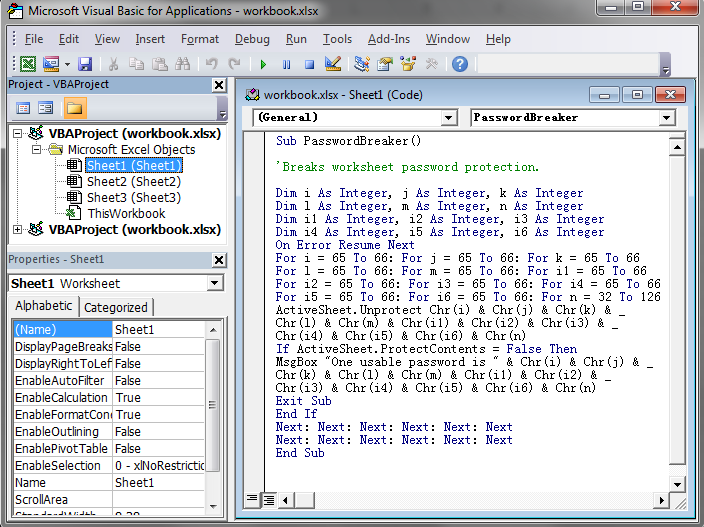5 Genius Tricks to Unprotect Excel Sheets Instantly

Excel sheets can often be protected by passwords or restrictions to prevent unauthorized changes or access to sensitive information. However, there are instances where you need to access or modify these protected sheets for legitimate purposes. Here are five genius tricks that can help you unprotect Excel sheets instantly, ensuring you have the freedom to work efficiently with your data.
1. Use VBA Macro Code

Visual Basic for Applications (VBA) is a powerful tool in Excel that can be used to automate tasks, including unlocking protected sheets. Here’s how you can do it:
- Open Excel and press ALT + F11 to open the VBA editor.
- Go to Insert > Module to create a new module.
- Paste the following VBA code into the module:
Sub UnprotectSheet()
Dim ws As Worksheet
For Each ws In ThisWorkbook.Worksheets
ws.Unprotect Password:=“”
Next ws
End Sub
💡 Note: This method works for sheets without a password. If a password is set, you’ll need to know it for this macro to work.
2. Zip the Excel File

Sometimes, you can unprotect an Excel sheet by zipping the file. This method is more technical but effective:
- Rename the Excel file to end with .zip (e.g., from file.xlsx to file.zip).
- Extract the contents of the zip file using a zip utility.
- Locate and open the xl folder, then the worksheets folder, and find the XML file corresponding to your protected sheet.
- Open this XML file in a text editor and search for the sheetProtection tag. Remove or comment out this tag, then save the file.
- Rezip the folder structure, rename it back to .xlsx, and open it in Excel.
The sheet should now be unprotected. Be aware this method modifies file structure, so use it cautiously.
3. Online Services

There are several online tools designed to remove Excel password protection:
- Search for “unprotect Excel sheet online.”
- Upload your file to one of these reputable services.
- Download the unprotected Excel file.
⚠️ Note: Always ensure the service you use is legitimate and secure as uploading sensitive data online carries risks.
4. Excel’s Backdoor Password

Excel has a known backdoor method for unprotecting sheets:
- Open the workbook.
- Right-click on the protected sheet tab, select View Code.
- In the VBA editor, delete the ‘Protect’ command from the sheet’s code.
- Save, close, and reopen the workbook; the sheet will now be unprotected.
This trick works because it effectively removes the protection code without needing the password.
5. Hex Editing (Advanced Users)

For users familiar with hex editors:
- Use a hex editor to open the .xlsx file directly.
- Search for the DP tag (002A DP) in the binary file, which contains protection settings.
- Delete the content between 002A DP and the ending DP tag, save, and exit.
- Reopen the file in Excel; it should be unprotected now.
This method is the most technical and should only be attempted by those comfortable with editing binary files.
Unprotecting Excel sheets can be essential for various reasons, from recovering your own forgotten passwords to ensuring you have full control over your documents. These methods provide options for different levels of technical ability and access rights. Remember that unprotecting sheets without permission is unethical and might be illegal, so use these techniques responsibly.
With these five genius tricks, you can handle any Excel protection scenario effectively, ensuring you have the tools to manage your spreadsheets efficiently and securely.
What should I do if I forget the password for my Excel sheet?

+
If you forget the password, try using the VBA macro or online services to unlock the sheet. Remember, not all methods work if a password is set, so keeping your passwords secure is crucial.
Can I use these methods to unprotect sheets not created by me?

+
Yes, but doing so without permission might be considered unethical or illegal. Always ensure you have the right to modify or access these sheets.
Are there any risks involved in using these unprotection methods?

+
Yes, especially when using online tools, you risk exposing sensitive data. Hex editing and modifying file structures can potentially corrupt files if not done correctly.



